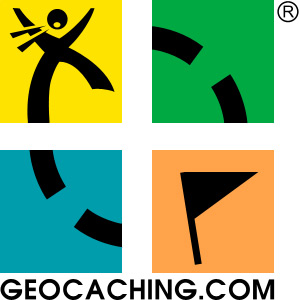
|  |  |  Travel & Outdoors Travel & Outdoors  
Geocaching Near Puerto Vallarta
 PVNN PVNN
January 18, 2010


| | The Groundspeak Geocaching Logo is a registered trademark of Groundspeak, Inc. Used with permission. |  |
If you enjoyed treasure hunt games as a child, you will almost certainly enjoy Geocaching as a sport or hobby. Geocaching is a high-tech version of the treasure hunt, using a hand held GPS to find hidden containers (caches) in interesting places all around the world. Of the almost 1 million caches hidden worldwide, around 20 are located between Tepic and a point south of Puerto Vallarta, but new geocachers are usually surprised to discover that there can be dozens of geocaches hidden near their own homes in Canada or the USA - they just never knew they were there.

Becoming a geocacher is a fairly simple process, and if you already own a GPS, it is free, just a matter of registering a user name and password at GeoCaching.com. That user name gives access to descriptions and coordinates of caches anywhere in the world, and that is when the fun begins, because finding caches can be a personal, one at a time activity, done whenever travel takes you near to an identified cache, or it can be a social activity, done with friends, perhaps setting out to find 3 or more caches and incorporating a picnic or restaurant lunch.

Examples of places where caches are hidden in our area include at least 3 in downtown Puerto Vallarta, 2 near to the Cruise Ship Terminal and WalMart, 2 in Sayulita, 2 in Lo de Marcos, and 1 in Rincon de Guayabitos. The search for some of them will likely take you to places you didn't know existed, such as hidden gardens or the back streets of a small town, and some will surprise you because of the type of cache, or the cleverness of the hide.

Caches come in a range of sizes, from nano-caches, which are not much larger than a pencil eraser and usually attach magnetically to a steel surface, to extra large caches the size of buckets, which have to be carefully hidden. All contain a logbook though, so that the find can be registered, and the larger caches usually contain additional items, such as small toys, trinkets, and novelty items, often conforming to a theme consistent with the name or location of the cache. For example, a cache at a golf course might contain balls, tees, and other golfing items, and caches can be disguised or camouflaged to look like part of a building or vegetation.

The cleverness of the hide obviously impacts on the ability of searchers to find a cache, so each cache is rated online from easy to very difficult. The terrain is identified in the same way, so that climbing a steep hill can be avoided by someone who prefers caches hidden on level ground with easy access. Once the cache has been found, and the logbook signed, the success can be registered on line, so that the total number of finds can be tracked.

Geocaching came into being in May of 2000, after the USA adjusted its military satellites to provide accurate signals for commercial GPS usage. A computer consultant in Oregon, Dave Ulmer, decided to try an experiment testing the newly accurate GPS signals by hiding a bucket in the woods near Beaver Creek, Oregon for others to find.

This experiment led to the establishment in July of the Geocaching website by Jeremy Irish, a website developer from Seattle. The rest is history, Geocaching has ballooned into a worldwide sport attracting thousands of enthusiasts, many of whom have already logged more than a thousand geocaches.

One Snowbird who has hidden at least 3 of the caches around Puerto Vallarta and the surrounding towns is Ted White, who winters at El Refugio RV Park in Lo de Marcos. He is happy to provide assistance and advice to anyone who would like to get involved in geocaching, and can be reached via email at TedandSueWhite(at)aol.com.

Ted says that he and Sue made a point of searching for caches along their route south this year, timing the stops to work in with lunch breaks or overnight stays, and adding new interest to what can otherwise be fairly boring travel. Their plan is to do the same thing heading north again in the Spring, using a different route, for exposure to different caches. So could this be a new sport for you? Why not grab your GPS and give it a try. |

 |
|  |



